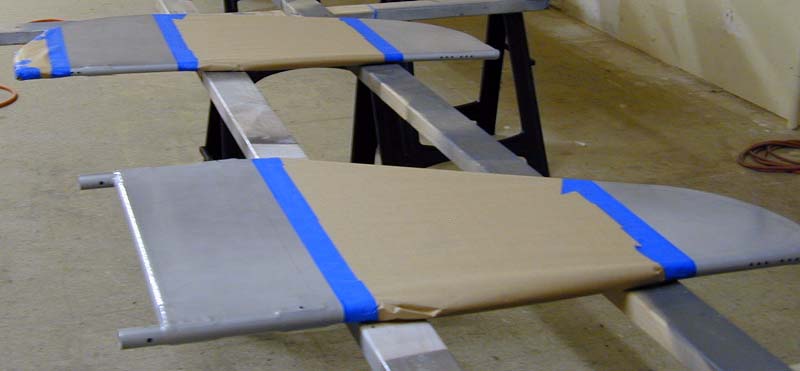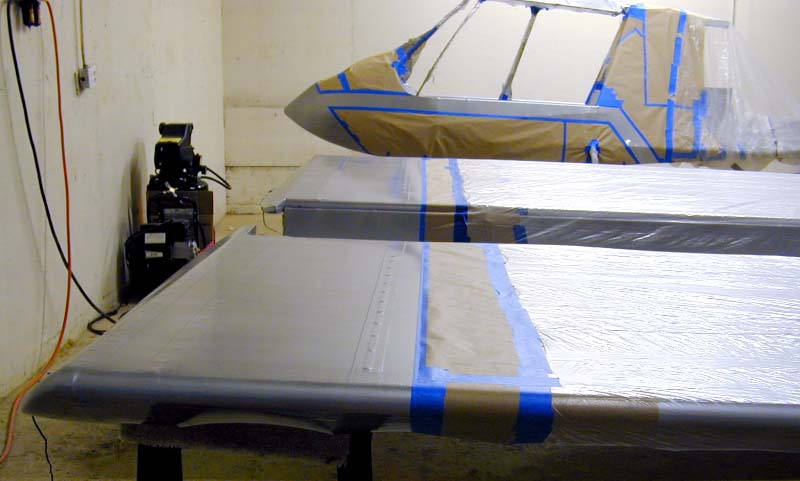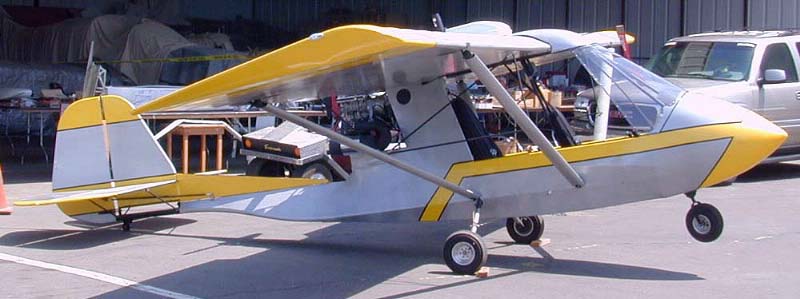Painting Fuselage, Wings & Tail Sections
Using AFS/Stewart Systems Painting Method
For this web page, we will be showing you how to paint your Challenger using the AFS/Stewart Systems method. Above (upper right) is a link to download Adobe's Acrobat Reader if you need it. Also a link to download Stewart Systems Fabric Covering and Painting Manual is included. The manual will go into more detail than what we will present to you in
this article and is recommended that you download a copy before you begin your own painting. |
 |
 |
 |
 |
The drain grommet can be a flat "cellulose acetate butyrate resin" washer like drain or the clear seaplane drain grommets shown below. Once you have determined where you want to place a drain grommet, apply a coat of CecoBond cement to the underside of the washer and firmly seat it, bonding it to the fabric. For the washer, the fabric will be applied to the top of the washer in the same manner as the inspection ring. When dried, use a soldering iron to melt a hole through the fabric in the center of the washer. The photos of the seaplane drain grommets (below) are from a Poly Fiber build, but would be installed in the same manner using CecoBond cement. For the seaplane drain grommet, cut a circle from a scrap piece of covering material about the size of a silver dollar. Using CecoBond cement, glue down the cloth patch first as it will be used to reenforce the material when you melt the 1/4 inch hole with your soldering iron. After making the 1/4 inch hole in the center of the patch, apply a coat of the cement to the underside of the seaplane drain grommet and seat the grommet firmly to the center of the patch, over the 1/4 inch hole. Be sure the raised opening of the seaplane grommet is facing the rear of the plane. |
 |
 |
 |
 Available from Aircraft Spruce |
Adjust the spray from the gun as a mist, making sure you do not have any droplets being applied with the spray. |
Items Needed:
|
Blow off part and wipe with terry cloth (if not already done). After measuring, stir in catalyst to resin slowly. After stirring for a while notice the Topcoat becoming creamy. Start with 1/2 part water, stir in. Using DuPont M50 viscosity cup, take viscosity measurements. The target is 19-20 seconds. Add small increments of the remaining water until correct time achieved. 19 seconds is desirable. Spray Gun Setup: Open fan control all the way to max. Adjust pressure at gun (in line regulator) to 20psi. Open paint knob approx 3/4 from closed. |
 |
 |
 |
Using the final color for your striping, follow the painting proceedure at the beginning of the "Final Color Painting", above. |
 |
 |
 |
After you have removed all of the masking tape and paper, and assembled your Challenger, this is what the final stage should look like. Of course, striping designes and color will vary depending on one's individual taste. |
 |